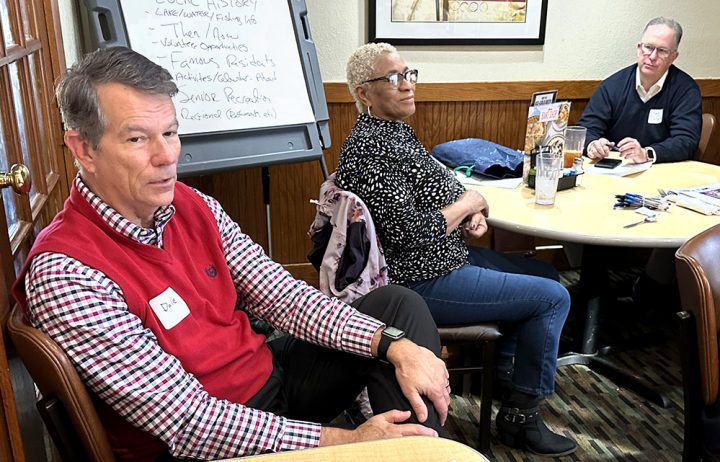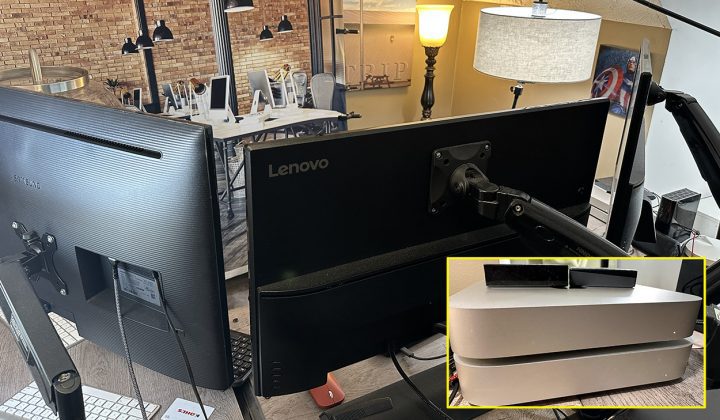The Secret to Growing Papers: Give the readers what they want
|
Click play to LISTEN to the article below
|
The following guest column was contributed by our friend and industry expert, Kevin Slimp! Don’t miss Kevin’s LIVE webinar on “Advanced Skills in Photoshop” next Thursday, February 16th at 3PM EST. It is available to Our-Hometown customers free as part of the Kevin Slimp Webinar Series!
Earlier this month, I traveled about an hour from my home to conduct focus groups for a weekly newspaper in Tennessee.
Focus groups come in all sizes and shapes. This particular focus group was a little different than most. The paper had gathered 15 seniors – the minimum age requirement was 60 – to spend three hours discussing recent issues of the newspaper and making suggestions about ways to improve the content.
We learned a few things that surprised us, and a few things went as expected. I felt this would be one of the “easiest” focus groups I’ve done. The paper is very successful and continually works to improve its product and meet the needs of its readers. I had a feeling I wouldn’t run into too many angry participants.



Publisher Dale Gentry The Jefferson City Tennessee Standard Banner takes questions from focus group members in January
As the gathering neared the end, the conversation turned to how many focus group members had moved to the area from other parts of the country. One recently relocated from Massachusetts and noted how surprised she was that the quality of the paper was so much better than what she had grown accustomed to in her previous home. Others who had relocated from other parts of the country echoed in with similar opinions.
Focus group members shared stories of papers in other towns that had “dwindled to nothing.”
They agreed that their weekly paper’s content and overall quality were much better than the metro paper 45 minutes away.
One of the final statements of a group member promises to stay with me.
“Please don’t sell our paper to one of those national groups! We love it and don’t want to see it destroyed.”
Fortunately for her – as well as everyone else in the group – there’s no risk of that.
Most weeks, I meet either in person or online with one or two newspaper staffs to discuss every aspect of the newspaper business. Today, I’m meeting with a group of newspapers in New York to discuss their editorial workflow. A few days ago, I worked with the editors and designers of a paper in another state.
A while back, I had a fascinating meeting with co-publishers of a paper in Florida. As I looked through copies of their newspaper, I was impressed with both the content and design. I correctly guessed that they have a large readership among young adults. It was a very impressive publication from both a design and content standpoint.
I was surprised, however, when I learned that the focus on younger readers hadn’t happened on purpose. It was the result of having a young staff.
Imagine their surprise when I mentioned to the publishers the potential growth of their paper by including more content for older readers.
Most papers would kill – well, not literally – to have readership among young adults. But as I visited with the publishers, it dawned on me they had flipped the readership issue. They had a lot of young readers but were missing the middle-aged and senior markets.
Frankly, I think the paper in Florida is in a very good place. Gaining older readers is probably easier than attracting younger readers to most newspapers. But the method of gaining readers is the same: provide the stories, photos, and content to meet their needs.
I suggested they offer more stories related to health, travel, and human-interest stories. When I visit with most publishers, I suggest they provide more stories related to entertainment, DIY, and other topics of interest to younger readers.
Yes, newspapers still grow. I work with growing papers all the time – just about every day.
My New Toy Arrived – The Latest Mac

A few days ago, Apple announced their new line of Macbook Pro and Mac Mini computers. I have been waiting more than a year for the M2Pro version of the Mac Mini to arrive. Rumors were that we would have the new computer in mid-2022. It was a good exercise in patience for me. As you might guess, I immediately ordered the 10/16 Core model, with 16GB memory and a 512GB hard drive ($1,299 US). The mini arrived two days ago, and I love it.
There are three base models of Mac Minis. I suggest the $799 (8/10 Core, 512GB storage) for reporters. Designers should stick with the 10/16 Core model for $1,299. The $599 model is great for the student or use at home when no serious design work is required.
One final suggestion: don’t dare design pages without a minimum of two monitors. I use 32-inch (6X9 ratio) 4k monitors, and the speed with which I get things done more than pays for the hardware in no time.


Recent Comments